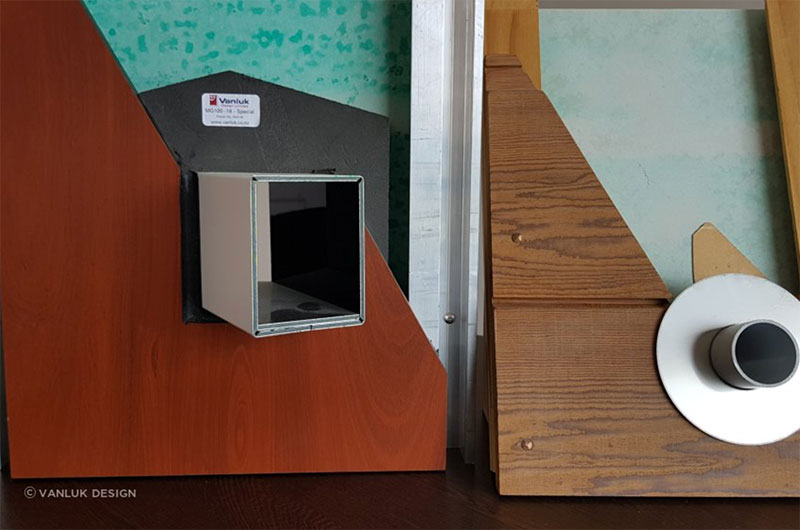Cavity flashings were introduced to the market several years ago and have had a remarkable effect on the industry…
Cavity flashings were introduced to the market several years ago and have had a remarkable effect on the industry, because for decades the most common way to maintain a building’s flexible/rigid air barrier was by dressing any pipes, beams or ducting that penetrated the exterior cladding with tape.
It was an inconsistent method as it depended upon the skill of the installer and was prone to failure.
John Lukaszewicz of Vanluk explains that there are several ways that the old methodology could fail over time – poor workmanship, incompatible products and poor product choice all could compromise its effectiveness.
“It was because of this common failure that we designed a different style of cavity flashing that relies less on the skill of the installer, and can be installed quickly and easily on site,” John says. “They can also be pre-profiled to any shape or size. The purpose of developing this product was to maintain a building’s rigid air barrier over time, and allow for a quick and easy installation.”

Effective flashings
Cavity flashings that prevent moisture from entering the building have now experienced another systemised enhancement. While the flashing remains as effective as before, the look has improved, with custom escutcheon plates now available.
These are used for two reasons, says John. “One is for the cosmetic finish around the penetration and the other reason is that where the material is too thin for effective sealing, we can actually thicken up the material with an escutcheon plate.”
The product is ideal for protecting or hiding the weather seal, or to “dress up” that part of the penetration.
Versatile applications
It can be installed on a variety of products – timber requires a screw fix, or on impermeable surfaces it requires an adhesive fix.
The escutcheon plates are available from Vanluk in a variety of different materials. The popular choice for the escutcheon is stainless steel because it comes pre-finished, “but that doesn’t stop you from having aluminium with a painted finish, for example.”
They’re designed to complement the existing cavity flashing system from Vanluk and they’re available as a single piece, or in a two-piece set.
Two piece set
The two-piece plate set is designed so that for any structure where it’s impossible to put an escutcheon plate around a penetration – for example, where it’s connected to a beam or canopy – the two halves can be installed to cover or enhance the weather seal.
John says both the cavity flashings and escutcheon plates are being used across the board in applications from commercial settings through to residential homes.
Pipes are the most common form of penetration, but Vanluk cavity flashings have also been used on scuppers and all types of steelwork that penetrates perpendicularly or at an angle.
Vanluk’s escutcheon plates and cavity flashings are custom-made in New Zealand. There is a standard range of sizes in stock, but custom-made pieces in different sizes or materials can be manufactured with orelatively short lead times.
Get in touch with Vanluk to discuss the merits of using this technology to protect your home or building.


